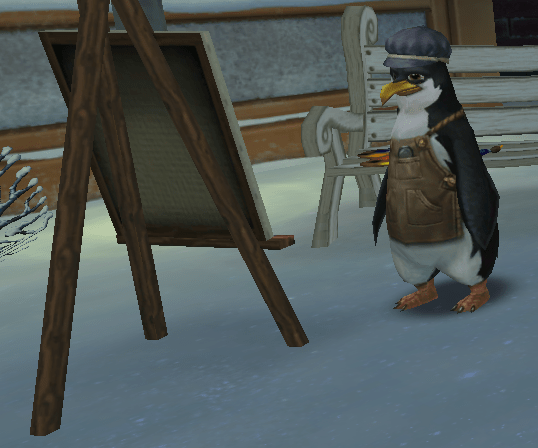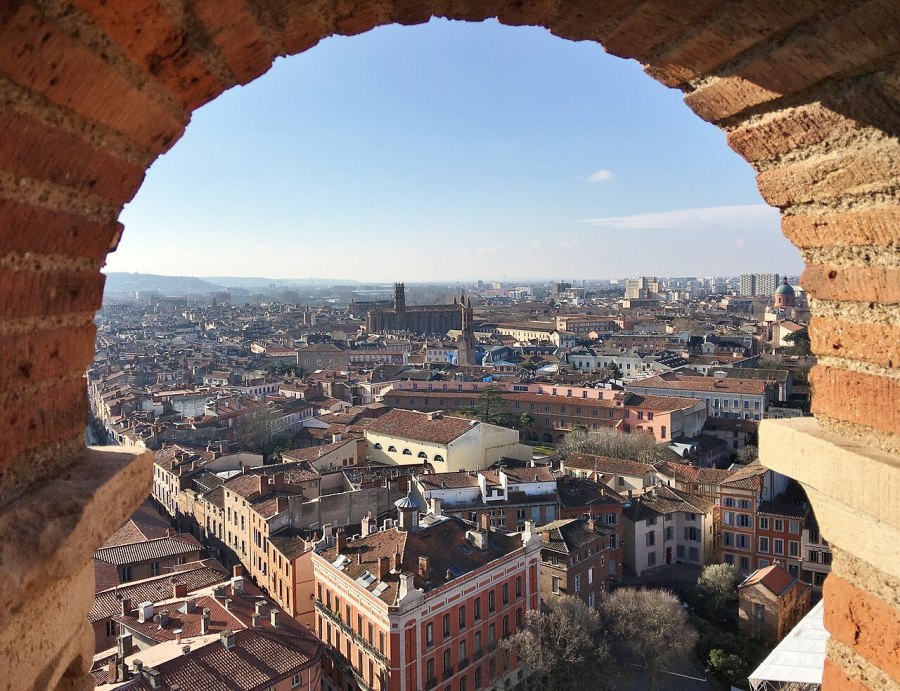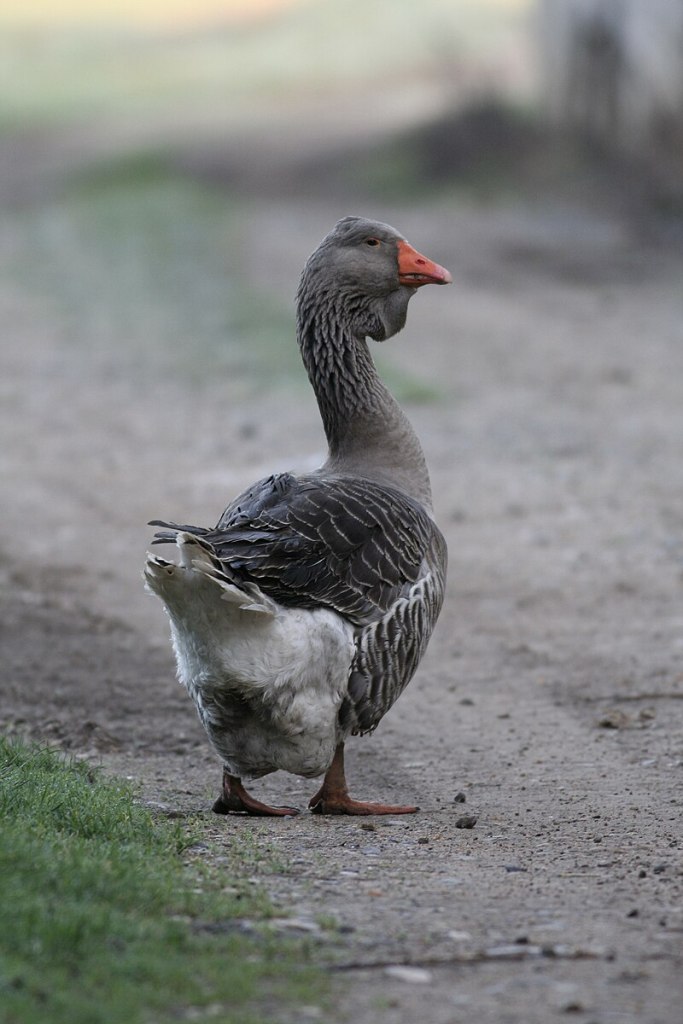Toulouse – Henri de Toulouse-Lautrec, Toulouse France, and a breed of goose
https://wiki.wizard101central.com/wiki/NPC:Toulouse
https://en.wikipedia.org/wiki/Henri_de_Toulouse-Lautrec
https://en.wikipedia.org/wiki/Toulouse
https://en.wikipedia.org/wiki/Toulouse_goose
Thank you to Ashley D. for the head’s up that this was a reference. She uncovered the French city and goose breed.
This Master Artist standing outside Walkruskberg’s very fashionable Clothing Shop is in need of assistance to obtain the supplies necessary to create an inspirational series of Resistance Posters.
The side quests “Sacred Blue” and “Pièce de Résistance!” are plays on on French colloquialisms “sacre bleu!” and ” pièce de résistance”. The literal translation of each is “sacred blue!” and “piece which has staying power”.
Sacrebleu is a stereotypical and very old fashioned French curse, which is rarely used by the French these days. An English equivalent would be “My Goodness!” or “Golly Gosh!” It was once considered very offensive.
It literally means “sacred blue,” but it comes from “sacré Dieu” or “sacred God.” “Bleu” was used by people to replace “Dieu” in order to avoid the blasphemy of explicitly using the name of God. A nice discourse of the etymology of the phrase can be found here.
Pièce de résistance (French “the piece with the staying power”) has come to mean either; the best achievement of an author or artist, representing their major life effort, or the main course of a meal.
Comte Henri Marie Raymond de Toulouse-Lautrec-Monfa (24 November 1864 – 9 September 1901), known as Toulouse Lautrec, was a French painter, printmaker, draughtsman, caricaturist, and illustrator whose immersion in the colourful and theatrical life of Paris in the late 19th century allowed him to produce a collection of enticing, elegant, and provocative images of the sometimes decadent affairs of those times.
Born into the aristocracy, Toulouse-Lautrec broke both his legs around the time of his adolescence and, due to the rare condition pycnodysostosis, was very short as an adult due to his undersized legs. In addition to his alcoholism, he developed an affinity for brothels and prostitutes that directed the subject matter for many of his works recording many details of the late-19th-century bohemian lifestyle in Paris. Toulouse-Lautrec is among the painters described as being Post-Impressionists, with Paul Cézanne, Vincent van Gogh, Paul Gauguin, and Georges Seurat also commonly considered as belonging in this loose group.

In a 2005 auction at Christie’s auction house, La Blanchisseuse, his early painting of a young laundress, sold for US$22.4 million, setting a new record for the artist for a price at auction.
Toulouse is the prefecture of the French department of Haute-Garonne and of the larger region of Occitania. The city is on the banks of the River Garonne, 150 kilometres (93 miles) from the Mediterranean Sea, 230 km (143 mi) from the Atlantic Ocean and 680 km (420 mi) from Paris. It is the fourth-largest city in France after Paris, Marseille and Lyon, with 504,078 inhabitants within its municipal boundaries (2021); its metropolitan area has a population of 1.5 million inhabitants (2021). Toulouse is the central city of one of the 22 metropolitan councils of France. Between the 2014 and 2020 censuses, its metropolitan area was the third fastest growing among metropolitan areas larger than 500,000 inhabitants in France.
Toulouse is the centre of the European aerospace industry, with the headquarters of Airbus, the SPOT satellite system, ATR and the Aerospace Valley. It hosts the CNES’s Toulouse Space Centre (CST) which is the largest national space centre in Europe, but also, on the military side, the newly created NATO space centre of excellence and the French Space Command and Space Academy. Safran, Thales Alenia Space, Airbus Defence and Space and Liebherr-Aerospace also have a significant presence in Toulouse.
The Toulouse is a French breed of large domestic goose, originally from the area of Toulouse in south-western France. Two types are recognised: a heavy industrial type with dewlaps, the French: Oie de Toulouse à bavette; and a slightly lighter agricultural type without dewlaps, the French: Oie de Toulouse sans bavette. Both types are large, with weights of up to 9 kg.
The production strain of the Toulouse goose was bred to be fast-growing, gaining weight rapidly when there is an abundance of food and no room for exercise. It may be reared for its meat, for goose fat, or for foie gras (the “fat liver”).
The current list of all the (known) Polaris references can be found here.
Although I am well versed in Pop Culture references but I do not claim to have caught them all. Let me know your favorites in the comments and if I’ve missed one you caught, let me know so I can add it to the list.
Text for this article is excerpted from the linked wiki pages
Toulouse image is from Wizard101, and is copyright of KingsIsle Entertainment
Henri Marie Raymond de Toulouse-Lautrec-Monfa image is borrowed from Wikipedia. It is in the public domain.
La Blanchisseuse image is borrowed from Wikipedia. It is in the public domain.
Toulouse France image is copyright Frédéric Neupont and is borrowed from Wikipedia. It is shared under the CC BY-SA 4.0 Creative Commons license.
Toulouse Goose image is borrowed from Wikipedia. It is in the public domain.
Goostav Darland II image is copyright and courtesy of Ashley Darland and is used by permission.
Image usage qualifies as fair use under US copyright law.




